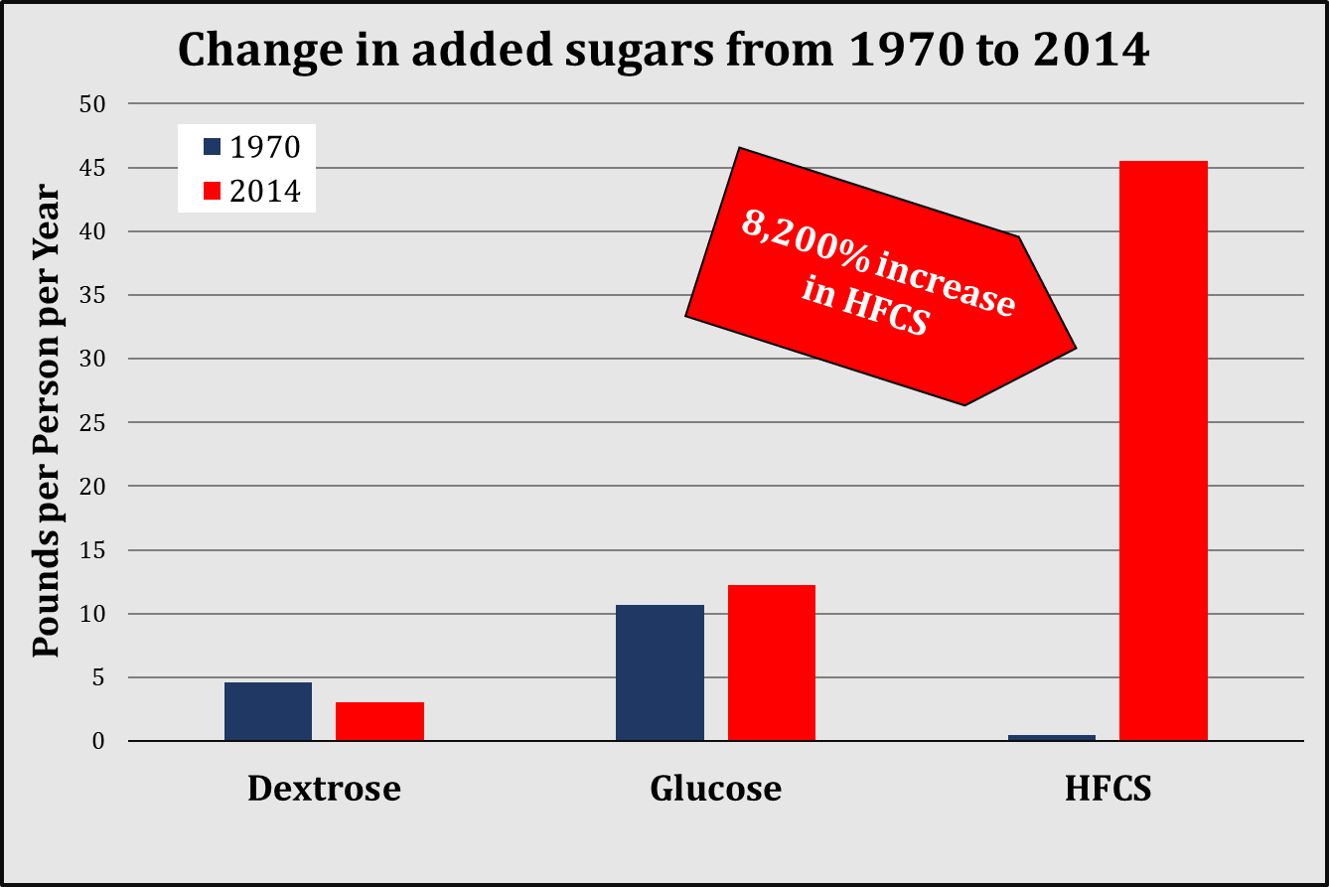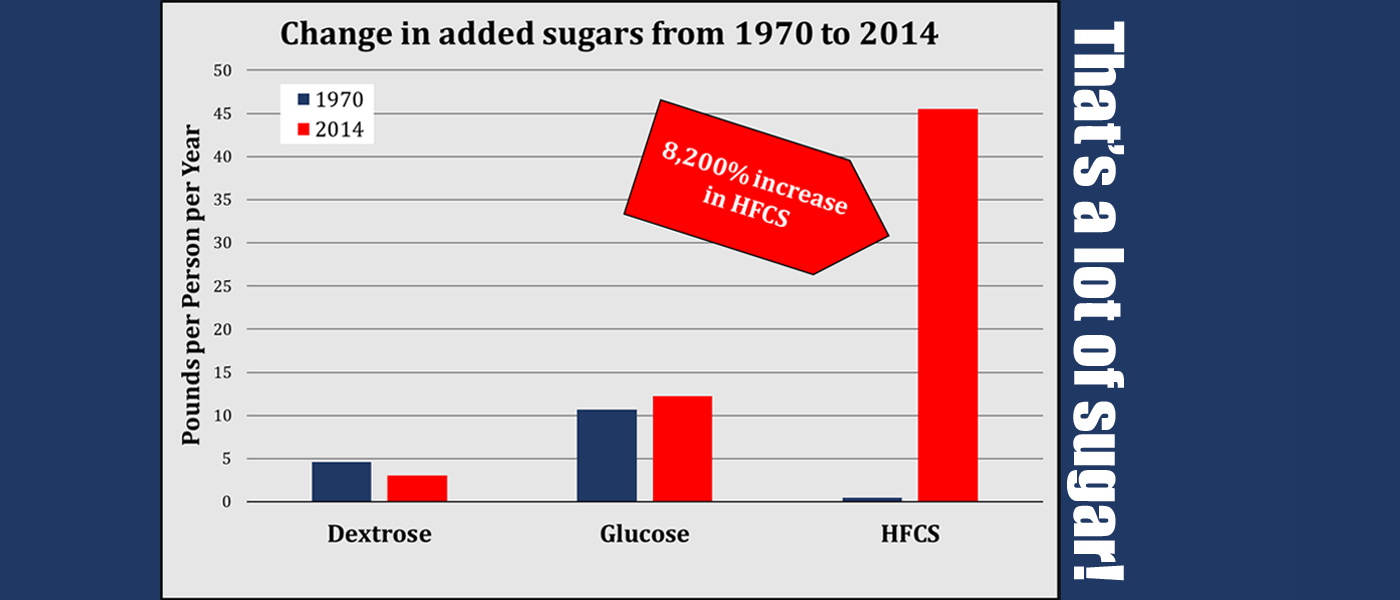Would you like to know why our chronic disease problem is so bad? Look no further than this!
The USDA recently published “U.S. Trends in Food Availability and a Dietary Assessment of Loss-Adjusted Food Availability, 1970-2014.”
This long-worded and cumbersome title means the report was trying to answer this question: “What kind of changes in food consumption can we see over the specified period of time?” In this case, that specified period of time would be 1970 to 2014.
For a little history: The late 60’s and early 70’s was when the low-fat message started hitting Americans. The USDA published the first dietary guidelines about this time, asking Americans to eat less fat, saturated fat and red meat.
Guess what? Americans, for the most part, followed suit.
There was essentially no change in protein consumption overall – a 1% change in 40 years. Not significant. However, chicken consumption increased significantly – more than doubling during the time period. Since chicken doubled and the overall amount was essentially unchanged, this means red meat consumption went down. As instructed.
Similarly, there were decreases in saturated fat consumption and increases in poly-unsaturated fat consumption (think soybean oil).
But at what cost?
High Fructose Corn Syrup
Between 1970 and 2014, the amount of HFCS consumption increased by 8,212%, going from 0.5 pounds per person per year to 45.5 pounds. This means the average American is consuming nearly 1 pound of HFCS per week!

Grain-Based Products
Wheat and corn-based products also increased in consumption, with wheat based products increasing by 31% and corn-based products increasing by 23%.
While wheat and corn-based products look and taste different than sweets, they act the same once they reach the digestive system. In other words, bread and sugar act the same.
Look Mom, It’s a Chronic Disease Carnival!
Replacing some meat products and lowering fat consumption led to an increase in sugar and processed food consumption.
Processed foods are devoid and any nutritional value. This leaves the body hungry, craving nutrition. But people continue eating processed foods. This starts a viscous cycle.
It starts with slightly, but chronically, elevated blood sugar because insulin starts losing its ability to function efficiently. It manifests itself as pre-diabetes, high blood pressure or problems with cholesterol. Then, usually, type 2 diabetes.
Over time, a person’s health continues to deteriorate because we give them medication to change a number and do nothing to fix the problem. Chronically elevated levels of insulin and fluctuating levels of blood sugar is toxic to all tissue in the body.
This leads to increased risk for kidney problems, vision problems, liver problems, neurological problems, etc…
The shift to this dietary approach means we have chronic diseases popping up all over the place, as if we were in a field of PEZ Dispensers.
How do we fix this problem?
It’s a two-pronged approach.
First, we need a shift from quantity of calories to quality of calories.
Earlier I mentioned that people continue eating processed food when hungry. Why do they do this? Part of it is convenience. But another important part is the thought that we can eat whatever we want, as long as we eat less. This justifies eating for convenience because it’s only the amount of calories consumed that is important.
But if forgets a serious issue: If the body is craving nutrition and we never feed it quality food, we will always be hungry. Remember, foods of convenience are devoid of nutritional value. They are just calories.
So we need more focus on quality of calories. This does not imply that calories are unimportant. It only means the quality of calories is more important. Stated another way: 1,000 calories from a grilled steak salad with vegetables and an olive oil, is not the same as 1,000 calories from Twinkies and Pepsi. Our digestive system is not the same as a bomb calorimeter.
Second, we need to focus on treating these individuals once they become diagnosed. Currently, we only managing their condition by prescribing medication to change a number. This does nothing to fix the problem. If it did, the possibility of getting off medication at some point would exist. It doesn’t (unless they take it upon themselves to do something).
Dietary policy led us here and it can lead us out
If we simply make a change in dietary policy as mentioned above, we would eliminate many of the chronic conditions anticipated in the future. We need to do this sooner rather than later. Current incidence and prevalence data for obesity and these chronic conditions suggest a tidal wave hitting our heatlhcare system soon.
That’s how we get out of this mess!
Thank you!
About Brian Sekula
Brian Sekula, PhD, is the founder and CEO of the Health Performance Institute, where they work with employers, their employees and individuals to alleviate the burden of chronic conditions by preventing diagnoses or helping individuals get off their medications. They do this by focusing on fixing the problem, rather than trying to reduce a number that is a symptom of the problem.




